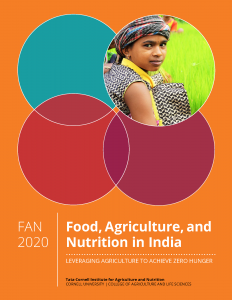Summery of agriculture-related recommendations for NITI Aayog’s “Strategy for New India @75” report:
– Improve yields – close the yield gap between India and best performing countries
– Increase area under fruit and vegetables cultivation for the benefit of small and marginal farmers
– “ Agricultural research in the country is constrained by resource inadequacy, regulations and intellectual property rights (IPR)”
– Increase area under irrigation through micro-irrigation
– Subsidy support for P and K fertiliser to fix NPK imbalance
– Make farmers ‘agriprenuers’ by replacing the existing agri produce marketing committee act with an expanded NAM
– promote synergy between Agriculture Technology Management Agency (ATMA) and Krishi Vigyan Kendras (KVKs) – push for PPP partnership in KVKs
– All extension should be market led and “value added” (reduce post-harvest losses)
– promote private investment in agriculture, improve opportunities for agri-business, there is need for corporate investment in agri-infrastructure
– Adopt the Model Agricultural Produce and Livestock Marketing Act (APLM) of 2017, update the essential commodities act
– replace CACP with an agricultural tribunal – replace MSP with a “minimum reservce price”, which should be starting price for auctions at mandis
– Separate the criteria for MSPs for (i)surplus produce; (ii) for deficit but globally available products; and (iii) for products that are in deficit both domestically and globally.
– have an “agricultural advisory service” like the US and EU to ensure farmers adopt an optimal cropping pattern to maximize income …
– basically MSP is a partial short-term solution so the long-term trade regime should be favourable to ensure better prices for farmers.
– promote FPOs and credit through JLGs
– use land-leasing act to allow small farmers to access land (through formal tenancy)
– Improve rural infrastructure: roads, cold storage, village level procuement centers, food processing, werehouses, “block level resource centres” for creating value chains targeting “clusters of villages”
Summary: Promote agri-business (small and large), reform policy (for tenancy, contract farming, marketing), improve infrastructure and supply chain, improve extension services to enable better price recognition, promote organic farming and also move farmers into manufacturing to supplement income
Divya Veluguri
[wpdm_package id=21 template=”link-template-calltoaction3.php”]


About the author